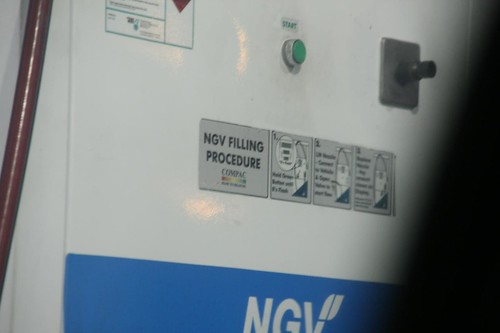I noticed the label on the fuel dispenser, stating NGV. "What is NGV?", I later asked the taxi driver. He said it is a type of fuel that's like cooking oil but meant for cars. It is cheaper than diesel or gasoline. And, the conversation followed along the lines of this:
Me: What car parts do you need to change for your car to take NGV?
Him: You will have to install a fuel tank that can take NGV
Me: What about the engine? Does it need a different type?
Him: No, it's just the fuel tank that needs changing.
Me: Do all taxis use NGV?
Him: Yes, all if not most taxis use NGV now.
At this point, we passed by the Shell fuel station.
Me: Does Shell have NGV?
Him: No, only Petronas has NGV.
There, we went on to talk about oil companies in our respective countries. Unlike in Brunei where we only have Shell fuel stations, Malaysia has several. There are Petronas, Shell, Caltex, ESSO and BHP.
After a bit of surfing on NGV, it turns out that NGV are vehicles which use liquefied natural gas, a cleaner alternative to gasoline. NGV stands for Natural Gas Vehicle. I googled and found these: resource 1 and resource 2. It's always good to read from several resources to make sure the information is coherent.

Fuel dispenser for NGVs. The steel nozzle on the top right is where the hose will be placed once the refueling procedure is completed.

No comments:
Post a Comment